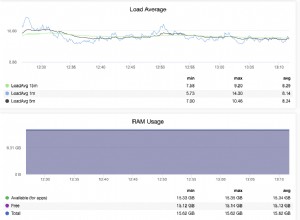Oprócz brakującego zasobu/obiektu połączenia mysqli istnieją inne problemy ze skryptem:
- jest podatny na wstrzyknięcia sql
- nie testujesz połączenia mysql, jak pokazano na http://docs.php .net/mysqli.quickstart.connections
- skrypt ogólnie nie obsługuje błędów. Każda z funkcji/metod mysqli_* może się nie powieść. Np. ostrzeżenie dotyczące
mysqli_num_rowswiąże się z niesprawdzaniem wartości zwracanej przezmysqli_query. - Twoja funkcja test_input() niczego nie testuje, ale zmienia wartość; a adres e-mail nie ma nic wspólnego z htmlspecialchars() i in. Po prostu zrezygnuj z tej funkcji.
- Weryfikacja adresu e-mail wydaje się zbyt skomplikowana bez oczywistych zasługa.
- Zamiast kombinacji SELECT/INSERT, aby uniemożliwić dwukrotne wstawienie adresu e-mail, po prostu utwórz unikalny indeks na tym polu, a serwer mysql niezawodnie zapobiegnie duplikatom.
np.
<?php
define('MYSQL_ER_DUP_KEY', 1022); // see https://dev.mysql.com/doc/refman/5.6/en/error-messages-server.html#error_er_dup_key
$errors = array();
if($_POST) // might be superfluous
{
// simplified email validation
// improve if needed
$email = filter_input(INPUT_POST, 'email', FILTER_VALIDATE_EMAIL);
if ( !$email ) {
// removed html/style from error message, better do that when printing the error
$errors['email1'] = "A valid email address is required";
}
// you only need the database connection after the email address is validated
$mysqli = new mysqli('localhost', 'root', '','ecommerce');
// see http://docs.php.net/mysqli.quickstart.connections
if ($mysqli->connect_errno) {
trigger_error("Failed to connect to MySQL: (" . $mysqli->connect_errno . ") " . $mysqli->connect_error, E_USER_ERROR);
}
// not checking if this email address is already in the database
// instead create a unique index for that field
// see https://dev.mysql.com/doc/refman/5.6/en/constraint-primary-key.html
// - otherwise you'd at least have to lock the table to avoid race conditions -
// sql injections: see http://docs.php.net/security.database.sql-injection
// to prevent sql injections you either have to make sure string literals are
// properly encoded/escaped or use preparead statements+parameters
$stmt = $mysqli->prepare('INSERT INTO subscriptions (email) VALUES (?)');
if ( !$stmt ) {
trigger_error("prepare statement failed (" . $mysqli->errno . ") " . $mysqli->error, E_USER_ERROR);
}
else if ( !$stmt->bind_param('s', $email) ) {
trigger_error("bind_param failed (" . $stmt->errno . ") " . $stmt->error, E_USER_ERROR);
}
else if ( !$stmt->execute() ) {
// email has a unique index, inserting an email address a second time
// results in a ER_DUP_KEY error
if ( MYSQL_ER_DUP_KEY==$stmt->errno ) {
$errors['email2'] = "email address already in subsription list";
}
else { // otherwise it's "really" an error
trigger_error("execute failed (" . $stmt->errno . ") " . $stmt->error, E_USER_ERROR);
}
}
else {
[... inserted ...]
}
}




